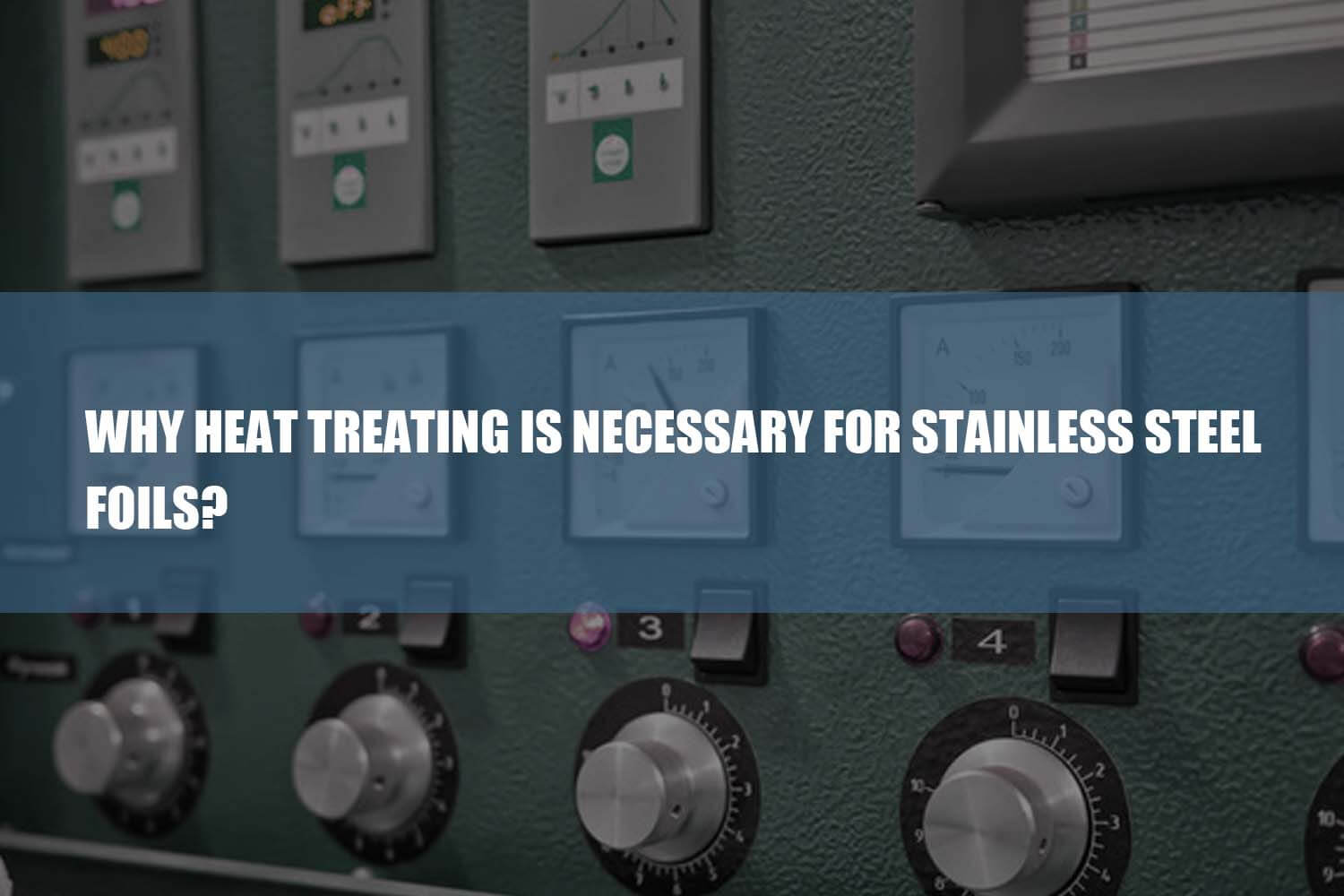The process in which we improve the formability, hardness, corrosion resistance, and strength of stainless steel foils is called heat treatment.
In this process of heating, the stainless steel at its molten stage cooled the stainless steel quickly or slowly to get the required mechanical properties.
Heat treating of stainless steel depends on the type of stainless steel and the purpose of treatment.
With the process of heat treatment, we can make the stainless steel foils stronger, more corrosion-resistant, and more malleable or ductile.
Heat treating of stainless steel foils is necessary to achieve such desired properties. In order to prevent scaling on the surface, heat treatment of stainless steel strips is typically done under controlled circumstances.
What are stainless steel foils?
Stainless steel foils are thin, flexible, and resist corrosion and high temperature.
Stainless steel foils are often wrapped or layered around the objects for protection.
When stainless steel foils come into contact with water, it does not easily corrode, stain or rust. This property distinguishes it from regular steel while maintaining the material’s strength.
This quality makes stainless steel foils the best choice for commercial and industrial applications.
Stainless steel foils are available in different grades and a variety of surface finishes and hardness.
Stainless steel foil can resist rust and endure extreme environments in a way that steel often cannot because of the addition of chromium. Stainless steel foils thickness range from 0.01 mm to 0.2mm.
What is the heat treating of stainless steel foil?
In the heat treatment process, heat the stainless steel foils at a critical temperature, hold them for some time, and then cool them back. Stainless steel undergoes some changes in its properties in this process.
The high temperature changes the stainless steel’s microstructure. Additionally, microstructure has a major effect on its mechanical properties.
Our desired final product depends on many different factors. These factors include the duration of heating, the length of time the stainless steel foil is kept at a specific temperature, the pace of cooling, and the surrounding environment.
These changes depend on the type of stainless steel heat treatment technique and the part size. The characteristics of the stainless steel will change during this procedure.
These characteristics include corrosion resistance, electrical resistance, magnetism, hardness, toughness, ductility, and brittleness.
Why heat treating is necessary for stainless steel foils?
There are many factors for carrying out heat treatment of stainless steel foils.
Some methods of heat treatment increase its hardness, and some methods make the stainless steel malleable and ductile.
We can easily increase the heat and electrical conductivity through heat treatment.
Some heat treatment techniques reduce strains generated by prior cold working procedures.
Others give stainless steel favorable chemical characteristics.
In some cases, stainless steel undergoes several heat treatment processes to achieve desired properties.
Suppose we want the desired properties of stainless steel foils on the customer’s demand, like hardness, corrosion resistance, and surface finish. Then heat treatment is necessary to fulfill their requirements.
Benefits of stainless steel foils
Stainless steel foils have beautiful luster, surface finish, and resistance against corrosion; these properties make it the perfect material for many applications.
Stainless steel foils are an ideal choice for the surface protection of any product.
Stainless steel foils or sheets can shield tools, dies, and parts during heat treatment. They offer protection by avoiding decarburization, scaling, and oxide formation.
Stainless steel strips are very beneficent for industrial and commercial applications.
We make stainless steel foils in different sizes and thicknesses as per the customer’s requirements. Our stainless steel foils have a shiny appearance, are stain-resistant, and are long-lasting.
How we performed the heat-treating process?
Heat-treating is a method for changing stainless steel’s internal structure or surface.
Heating the work piece at a specific temperature in a controlled environment holds this temperature for some time and then cools at different rates according to desired properties called heat treatment.
We can improve the quality by changing the internal structure of stainless steel.
Stainless steel is very common and widely used in several industries.
Additionally, the mechanical, physical, and chemical properties of aluminum, copper, magnesium, titanium and their alloys can be changed through heat treatment.
The heat treatment has three main stages: heating, soaking, and cooling. There are only two in some cases, heating and cooling.
Heating is basic and very essential part of heat treatment. There are several methods for heating stainless steel, like coal, oil, and gas fuels, and mostly used nowadays electric heating. The heating process must be done in a controlled or protective environment.
Cooling is also a vital point in the heat treatment of stainless steel. In this process, we control the rate of cooling to achieve the desired properties; like in the annealing process, the rate of cooling is slow, and for quenching, it is faster.
Processes of heat treatment
Four fundamental heat-treatment techniques exist for stainless steel annealing, normalizing, quenching, and tempering.
1.Annealing
This process involves heating the work piece at a specific temperature and cooling it at a very slow rate.
2.Normalizing
The work piece is heated to the appropriate temperature and cooled in the air. Normalizing method is similar to annealing, but the microstructure is finer.
3.Quenching
In this process, the work piece is quickly cooled in water, oil, or other liquid after being heated and insulated.
4.Tempering
In this process, the quenched steel parts are kept warm for an extended period at a suitable temperature more than room temperature and lower than 710 °C and then cooled in order to reduce the brittleness of stainless steel parts.
Conclusion
You can easily understand that heat treatment is essential for stainless steel foils. We have expertise in making stainless steel strips and foils.
We can achieve all the properties of stainless steel through the heat treatment process. We manufacture stainless steel foils in addition to providing slitting and finishing services.












